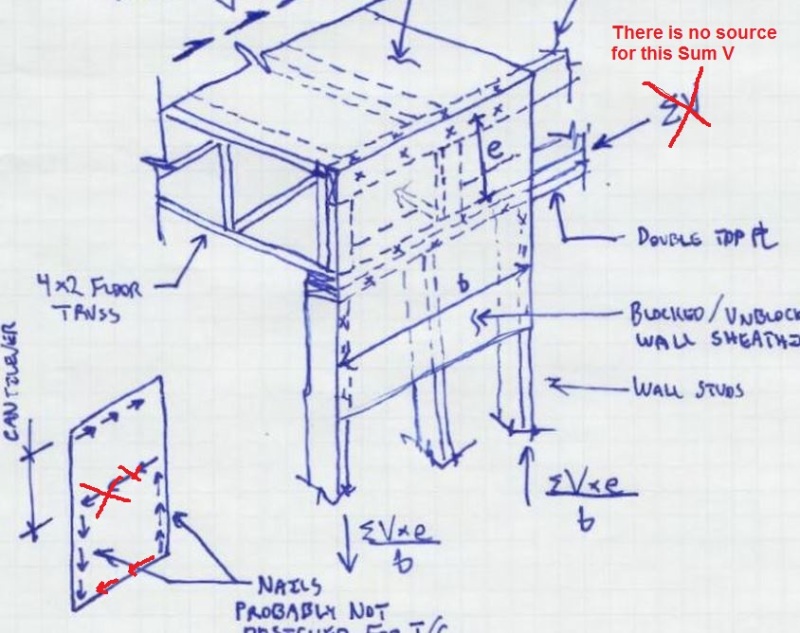Jerehmy
Structural
- Aug 23, 2013
- 415
Searched around, couldn't find anything that addresses my specific question.
For those that have Breyer 6th edition, Figure15.3b shows the connection situation I have a question about.
The diagram shows a framing anchor to connect the double wall top plate (chord) to the rim joist. It also says other connections such as toenails or blocking could be used in lieu of the framing anchor.
Why not just use the wall sheathing? I am racking my brain and can't figure out a reason why. Looked all over online and couldn't find anything. I feel like I'm overlooking something.
For those that have Breyer 6th edition, Figure15.3b shows the connection situation I have a question about.
The diagram shows a framing anchor to connect the double wall top plate (chord) to the rim joist. It also says other connections such as toenails or blocking could be used in lieu of the framing anchor.
Why not just use the wall sheathing? I am racking my brain and can't figure out a reason why. Looked all over online and couldn't find anything. I feel like I'm overlooking something.



